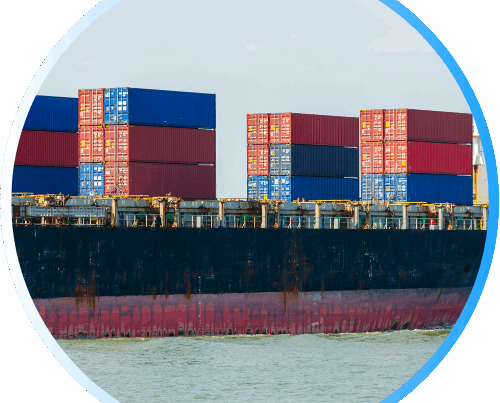Rate Related Update and Market Conditions
📌 Current U.S. Tariff Status (as of August 8, 2025)
- U.S.–China Tariff Truce Extended 90 Days: Effective August 11, the temporary trade agreement between the U.S. and China is extended through November 10, 2025. During this period, Chinese goods imported into the U.S. will remain subject to a 30% duty, while U.S. goods imported into China will continue to face a 10% duty.
- IEEPA Tariff Litigation Continues: On August 11, the U.S. Solicitor General and Assistant Attorney General urged the Federal Circuit to uphold the President’s IEEPA tariffs, citing national security, foreign policy, and economic impacts. Oral arguments took place on July 31; a ruling may take months and could be appealed to the Supreme Court.
- Potential New Tariffs Announced: Last week, the President signaled possible 100% duties on semiconductors and new levies on pharmaceuticals. No implementation details have been released.
- Reciprocal Tariffs Update: Modified country-specific reciprocal tariffs took effect August 7. Nations not listed in the July 31 executive order face a 10% baseline tariff, except China and Canada. Indian-origin goods will be subject to an additional 25% blanket duty beginning August 27, on top of a 25% reciprocal tariff already in place.
- Canadian Goods “Fentanyl” Tariff Increase: Effective August 1, the IEEPA “fentanyl” tariff on certain Canadian goods rose from 25% to 35%. USMCA-compliant goods and existing tariff stacking rules remain unchanged.
Source: whitehouse.gov, politico.com, whitehouse.gov
Rate Related Update and Market Conditions
Market Conditions
TPEB (Trans-Pacific Eastbound)
-
Demand remains flat in August, with Southeast Asia outpacing China in loadings. Rates have stabilized, and the PSS has been fully removed due to weak demand.
FEWB (Far East Westbound)
-
Volume is softening as peak season winds down. Spot rates have dipped slightly but remain elevated, supported by high vessel utilization.
TAWB (Trans-Atlantic Westbound)
-
Rates are steady across North Europe and West Med, with most PSSs deferred. GRIs are emerging for East Med lanes in early September.
Operational Updates
TPEB:
-
China ports face delays from Tropical Storm Co-may, with ripple effects in Busan. Equipment remains tight for some carriers despite slight improvement.
FEWB:
-
Typhoons continue to delay vessels at Far East ports, though inland congestion is limited. Delays are helping carriers maintain high load factors.
TAWB:
-
Antwerp remains heavily congested with over 9-day dwell times. Inland disruptions and chassis shortages persist across Central and Eastern Europe.
Capacity Management
TPEB:
-
Space remains widely available, even with capacity down to 70–80%. Carriers may adjust schedules with little notice.
FEWB:
-
Weekly capacity stays strong, with extra loaders added mid-month. Late August blank sailings remain unclear.
TAWB:
-
Capacity is stable, with blank sailings at 5–6%. Some service rotations are being adjusted to avoid congested ports.
Sources: xeneta.com, maersk.com, yangming.com, evergreen-line.com, supplychaindive.com
Asia–Latin America Freight & Port Update
Freight Rate & Capacity Snapshot
Market index data shows Asia–Latin America spot container rates averaging around USD 2,350 per 40-ft container this week, representing a ~3% decline from last week. This trend reflects broader market easing while vessel utilization remains high—above 85% on Pacific Coast services and near full capacity on East Coast services—pointing to sustained demand for agricultural and refrigerated cargo.
(Source: drewry.co.uk)
Port Operations & Infrastructure Developments
-
Mexico: Strategic ports—including Lázaro Cárdenas, Manzanillo, Veracruz, and the recently opened Puerto del Norte in Matamoros—continue to strengthen Asia–Latin America connectivity. These facilities are expanding their role as multi-regional logistics gateways, benefiting from nearshoring trends and increased intermodal links.
(Source: lmtonline.com)
-
Panama: The Panama Canal Authority has announced plans to tender the construction and operation of two new ports in the canal zone. These projects aim to boost transshipment capacity, improve cargo handling efficiency, and strengthen Panama’s role as a hub for Asia–LATAM trade.
(Source: reuters.com)
Transshipment & Compliance Updates
Southeast Asian transshipment hubs have implemented stricter export verification measures, including enhanced cargo scanning, document checks, and origin audits. While primarily targeted at U.S.-bound goods, these procedures are applied broadly and may add 1–3 days to the transit time of shipments bound for Latin America. Shippers using indirect routings should factor in this potential delay when planning delivery schedules.
(Source: washingtonpost.com)

LTL Rates Continue to Climb Following Classification Changes
Industry sources report that recent updates to the National Motor Freight Classification (NMFC), implemented July 19, have not caused the significant cost increases some anticipated. Larger shippers appear to have prepared in advance, while smaller customers may be seeing higher expenses. Carriers and logistics providers note minimal complaints or invoice changes, though long-distance less-than-truckload rates, as measured by the producer price index, remain on an upward trend.
Ocean Carriers Face Soft Peak Season Outlook Amid Tariffs and Excess Capacity
Analysts indicate that while some hope remains for a modest peak season in October–November, most forecasts point to subdued conditions. Spot rates on major Asia–U.S. routes continued to fall in early August, though the pace of decline has slowed. Carriers are using measures such as blank sailings and network adjustments to stabilize prices. Overcapacity concerns persist, with incoming vessel deliveries expected to add further pressure on market balance.


